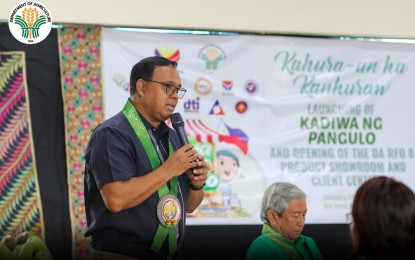
Department of Agriculture (DA) Eastern Visayas regional executive director Andrew Orais. (DA photo)
TACLOBAN CITY – The Department of Agriculture (DA) is aiming to surpass its 2023 rice production in Eastern Visayas to support other regions badly affected by the El Niño phenomenon.
In an interview Monday, DA regional executive director Andrew Orais said several interventions have been extended to farmers in the early part of the year to ensure higher yield this year.
Data shared by the Philippine Rice Research Institute showed that the region harvested 844,372 metric tons (mt) of palay (unhusked rice) last year, slightly higher than the 840,345 mt recorded in 2022.
“I am not sure of the specific target this year, but our goal is to have a higher output in 2024 to support the provinces that will be affected by the prolonged dry season. This is realistic since we have a favorable weather condition,” Orais told the Philippine News Agency.
For over a decade, the region has been aiming for a 1 million metric tons palay harvest, a figure achieved in 2008 when farmers in Leyte and Samar provinces harvested 1.03 million mt of rice.
In the past two years, the region recorded a production decline due to low fertilizer utilization among farmers, low level of farm mechanization, quality of seeds used and natural calamities frequenting the region, according to DA.
To improve the yield, Orais said one strategy being pushed is adjusting the peak of rice planting season to May and June to minimize the risk and losses during the typhoon period in October to December.
Another strategy is farm clustering and consolidation that seeks to maximize the limited resources within the rice industry.
Based on the latest report, not one of the six provinces in Eastern Visayas is included in the list of 41 El Niño-hit provinces this year.
“Even if our areas are not included in the areas with below-normal rainfall conditions, they have been monitoring the situation and preparing our water pumps and rice seeds if needed,” Orais added.
Initially, the DA received reports of drying of some rice fields in Samar province.
Forty-five percent of Eastern Visayas land area, or 976,415 hectares, is devoted to agriculture. The rest are forest lands, grasslands and other purposes.
Of its agricultural lands, 70 percent is for coconut production while the remaining is used to plant rice and corn. (PNA)
